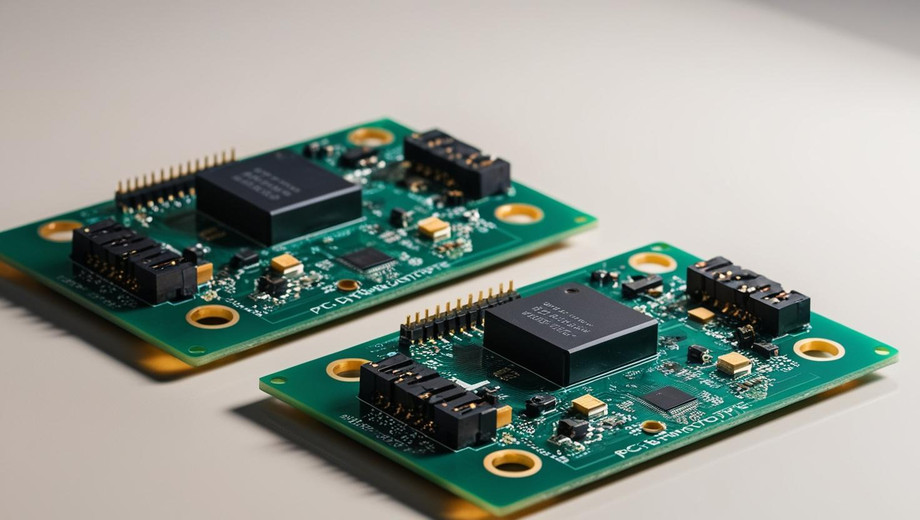Understanding PCB Board Thickness for Better Performance
In printed circuit board (PCB) design and manufacturing, board thickness might seem like a basic parameter. But it has profound effects on mechanical strength, electrical behavior, thermal performance, manufacturability, and reliability. Choosing the right thickness—and controlling its uniformity—is critical to delivering a high-quality PCB. In this article, we dive into why thickness matters, how to optimize it, and how SQPCB approaches this in its production.
Why PCB Thickness Matters
1. Mechanical Strength & Rigidity
A thicker board is more resistant to bending, warping, and mechanical stress. This becomes especially important in applications with vibration, shock, or flexing (e.g. automotive, industrial, aerospace). Too thin a board can lead to cracks in traces, fractures, or delamination.
2. Electrical Performance & Impedance Control
Board thickness directly influences the dielectric spacing between signal layers and ground planes. Any variation in thickness can cause unexpected shifts in characteristic impedance (Z₀), which is critical especially in high-speed, high-frequency, or RF circuits. SQPCB notes that nonuniform thickness leads to Z₀ variation, harming signal integrity.
In addition, the amount of dielectric (resin / substrate) contributes to the effective dielectric constant (εᵣ) seen by signals. If thickness shifts, that can change capacitance, signal delay, and even crosstalk margins.
3. Thermal Performance
Thicker boards can better spread and dissipate heat, especially when combined with higher copper thickness. However, there is a tradeoff: very thick boards may hinder heat flow to external thermal paths. The correct balance helps ensure components stay within safe temperature ranges.
4. Manufacturability & Tolerance
PCB fabrication processes (lamination, drilling, etching, plating) have physical constraints. Boards that are too thick or too thin push those limits. Standard thicknesses (e.g. 1.6 mm / 0.063″) are often easier to manufacture consistently with tight tolerances.
Uneven thickness (within a panel) can cause problems such as uneven plating, drilling deviations, warpage, and lamination defects. SQPCB emphasizes the importance of vacuum lamination and resin management to control glue flow and maintain uniform thickness.
In many electronic devices, size and weight are critical. Thinner PCBs help reduce the overall device form factor. But going too thin can compromise many of the benefits above. Designers must balance structural and electrical requirements against size constraints.
Standard & Custom PCB Thicknesses
While PCB thickness is customizable, many manufacturers—including SQPCB—support a range of standard thicknesses to simplify production and reduce cost risk.
-
A very common thickness in the industry is 1.57 mm (0.062 in) or 1.6 mm.
-
SQPCB’s product lines (e.g. their express PCB service) offer board thickness options like 0.4, 0.6, 0.8, 1.0, 1.2, 1.6, 2.0 mm, etc.
-
SQPCB also supports high thickness boards—up to 5.0 mm in some specialty/custom cases.
-
In extreme or special use cases (backplanes, heavy current PCBs), thicknesses up to or exceeding 3 mm or even higher (e.g. 10 mm) may be used.
Thus, you can often negotiate a custom thickness, but be aware that nonstandard values may incur extra cost or longer lead times.
SQPCB’s Capabilities & Approach
SQPCB (Shenzhen Shuoqiang Electronics) positions itself to handle a broad spectrum of board thickness and copper demands:
-
Maximum board thickness capability: 5.0 mm
-
Copper thickness capability up to 6 oz in their offerings.
-
They provide many standard board thickness options (0.4 to 2.0 mm and more) in their express PCB service.
-
Their in-house process and stackup design consider resin management, lamination control, Z₀ stability, and thickness tolerances.
This flexibility lets customers from consumer electronics to power systems choose boards optimized for their application demands—mechanical, thermal, and electrical.


Comments
Post a Comment